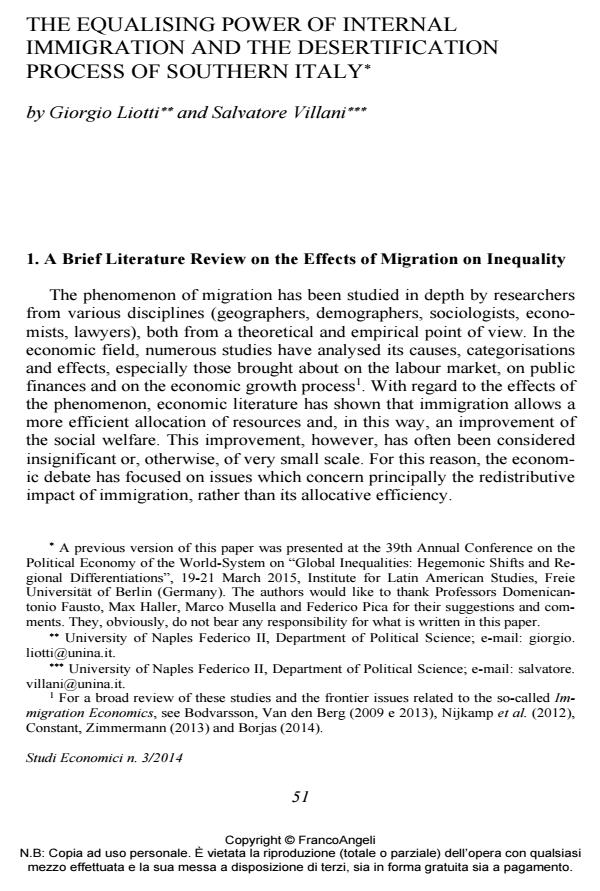The equalising power of internal immigration and the desertification process of southern Italy
Titolo Rivista STUDI ECONOMICI
Autori/Curatori Giorgio Liotti, Salvatore Villani
Anno di pubblicazione 2015 Fascicolo 2014/114
Lingua Inglese Numero pagine 27 P. 51-77 Dimensione file 235 KB
DOI 10.3280/STE2014-114003
Il DOI è il codice a barre della proprietà intellettuale: per saperne di più
clicca qui
Qui sotto puoi vedere in anteprima la prima pagina di questo articolo.
Se questo articolo ti interessa, lo puoi acquistare (e scaricare in formato pdf) seguendo le facili indicazioni per acquistare il download credit. Acquista Download Credits per scaricare questo Articolo in formato PDF

FrancoAngeli è membro della Publishers International Linking Association, Inc (PILA)associazione indipendente e non profit per facilitare (attraverso i servizi tecnologici implementati da CrossRef.org) l’accesso degli studiosi ai contenuti digitali nelle pubblicazioni professionali e scientifiche
According to some scholars, immigration can have a relevant role in the reduction of inequality. It has happened in the past and it may also happen in the future, as it is possible and desirable. However, migration in itself does not resolve definitely the issue of the inequalities and, moreover, in light of the recent studies on the effect of immigration, the exigency of additional in depth research on the impact of this phenomenon on regional disparities and income inequalities has become evident. The present paper faces these relevant issues, focusing on the regional impact of internal migration and attempting to demonstrate, with reference to the Italian case, how out-migration can increase income inequalities, thus hindering economic growth and exacerbating regional disparities, while immigration can reduce income inequalities and mitigate economic imbalances, according to the hypothesis of skilled immigration equalising, formulated in 2008 by Kahanec and Zimmermann.
Parole chiave:Income Inequality, Migration, Economic Growth, Redistribution through Immigration.
Jel codes:C23, E64, J15, R10
Giorgio Liotti, Salvatore Villani, The equalising power of internal immigration and the desertification process of southern Italy in "STUDI ECONOMICI " 114/2014, pp 51-77, DOI: 10.3280/STE2014-114003